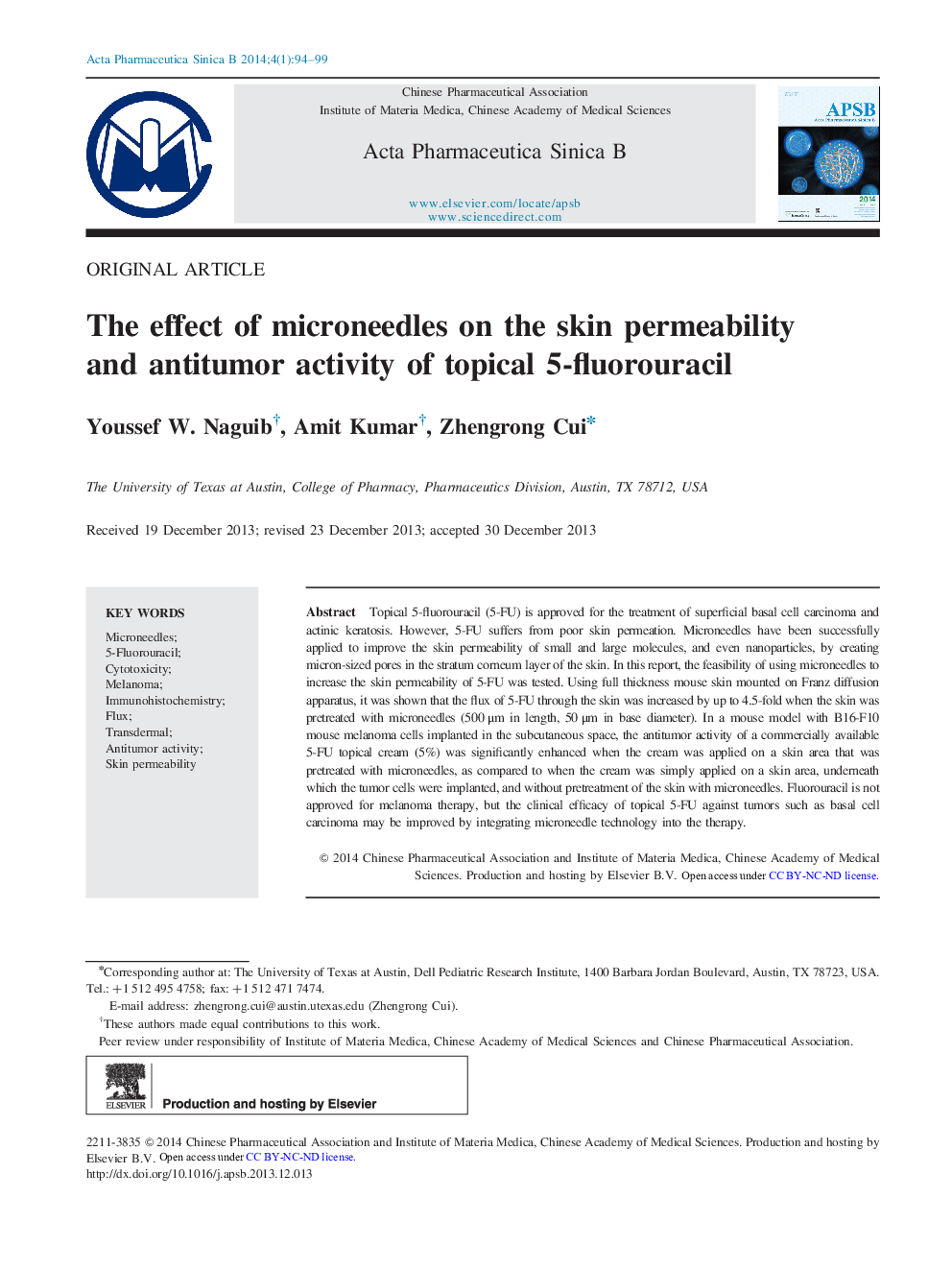| Article ID | Journal | Published Year | Pages | File Type |
|---|---|---|---|---|
| 2474817 | Acta Pharmaceutica Sinica B | 2014 | 6 Pages |
Topical 5-fluorouracil (5-FU) is approved for the treatment of superficial basal cell carcinoma and actinic keratosis. However, 5-FU suffers from poor skin permeation. Microneedles have been successfully applied to improve the skin permeability of small and large molecules, and even nanoparticles, by creating micron-sized pores in the stratum corneum layer of the skin. In this report, the feasibility of using microneedles to increase the skin permeability of 5-FU was tested. Using full thickness mouse skin mounted on Franz diffusion apparatus, it was shown that the flux of 5-FU through the skin was increased by up to 4.5-fold when the skin was pretreated with microneedles (500 μm in length, 50 μm in base diameter). In a mouse model with B16-F10 mouse melanoma cells implanted in the subcutaneous space, the antitumor activity of a commercially available 5-FU topical cream (5%) was significantly enhanced when the cream was applied on a skin area that was pretreated with microneedles, as compared to when the cream was simply applied on a skin area, underneath which the tumor cells were implanted, and without pretreatment of the skin with microneedles. Fluorouracil is not approved for melanoma therapy, but the clinical efficacy of topical 5-FU against tumors such as basal cell carcinoma may be improved by integrating microneedle technology into the therapy.
Graphical abstractPretreatment of mouse skin with microneedles significantly increased the skin permeability of 5-fluorouracil (5-FU) in vitro (left), and enhanced the antitumor activity of topically applied 5-FU against B16-F10 mouse melanoma cells implanted subcutaneously in mice (right). Figure optionsDownload full-size imageDownload as PowerPoint slide
